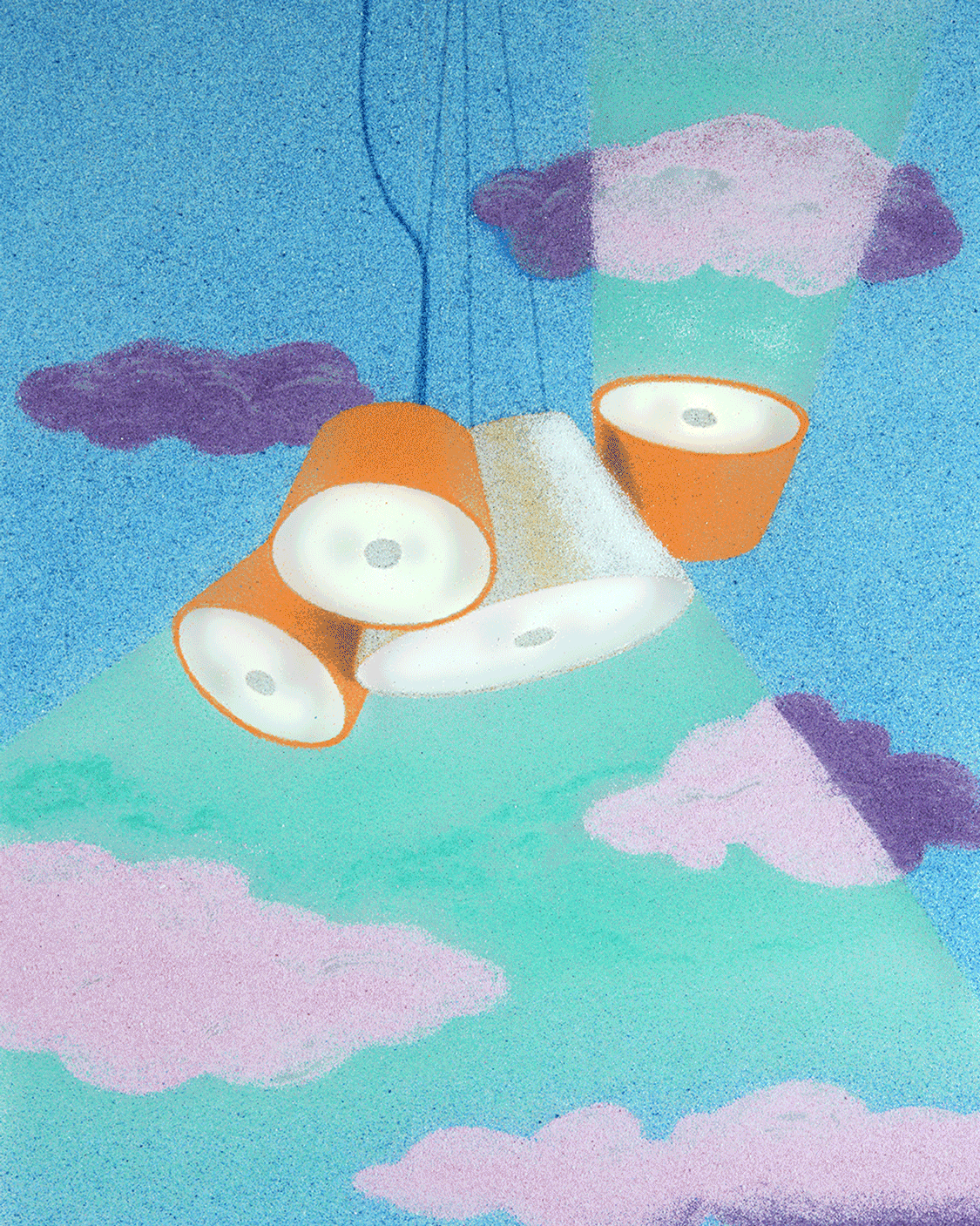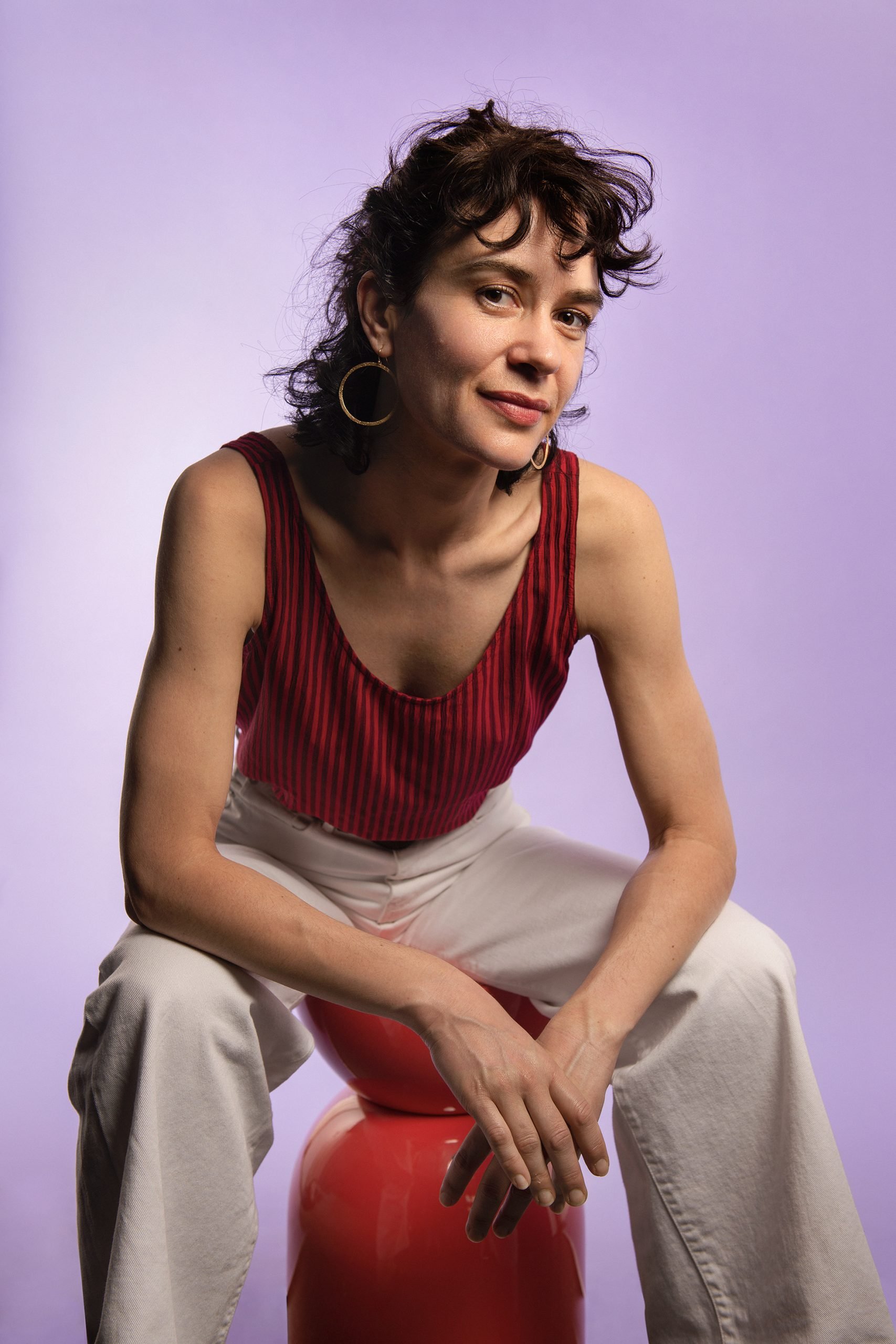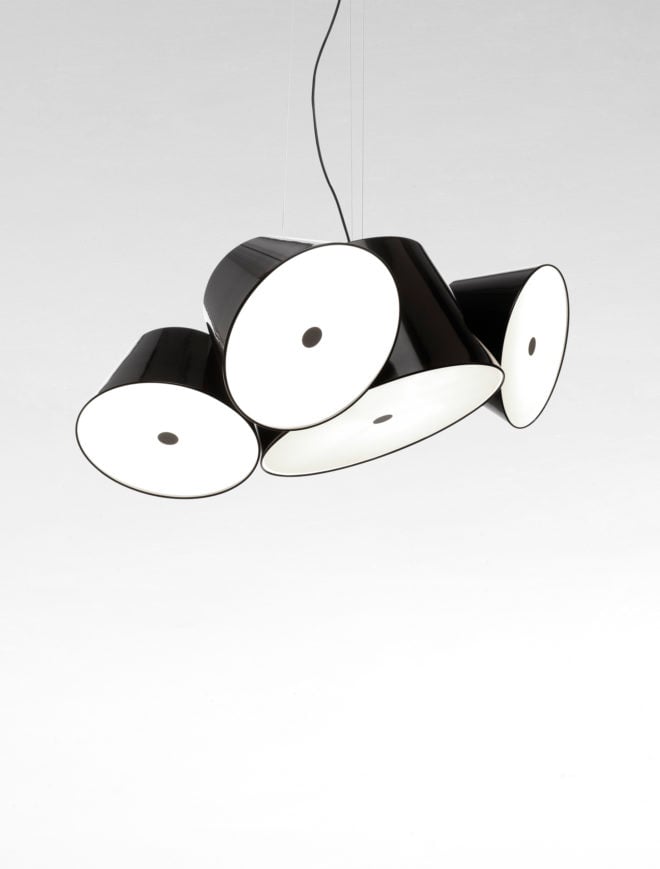Marset Featuring
Élodie Bouédec
Élodie Bouédec
Erosion, the passing of time
Elodie Bouédec graduated in Decorative Arts in Paris. After many years working in film and developing her taste for fantasy, Elodie now prefers a type of illustration in which she uses an unusual material: sand.
She believes that sand and light are inseparable. The denser the sand, the less light passes through it. Elodie shares with us her views on how sustainable it is to create using this organic material.

Your career began in cinema, right? How did the switch to the world of illustration happen?
EBI've always swung between illustration and film. My last film was live action, and I realised that I missed drawing.
You create beautiful art with a very unconventional and quite challenging element; namely, sand. What motivated you to explore a path so far from the ordinary?
EBThis technique comes from a series of sand animation films I made around Ovid's Metamorphoses.
Sand is also such an ephemeral substance; one sweep of a brush and it's gone. Is this a concept you consciously sought at first?
EBYes, because it allowed me to animate, and I like the fact that the image is never static and can be transformed.
We can find hints of a surrealist aesthetic in the figures and colours of your art. When staring at a blank canvas, what do you think of first: the colours or the setting?
EBAbove all, I think of an emotion, a state of being embodied in a subject. It's true that my images are reminiscent of surrealism, but it's above all strangeness that inspires me. These influences come from painting, of course, but also from literature and cinema.
While sand is a solid matter, light isn't. How do you represent this in your creations and what's its relevance?
EBIn my work, light and sand are inseparable. It's just as much the void, i.e. the space that isn't covered in sand and therefore lets the light through, that makes the drawing. The denser the sand, the less light passes through it. I also like the fact that there are no contours in sand drawing, and that the light creates depth in the image.

At Marset we care about the different nuances of light and how it impacts people's lives. Does lighting have an influence on your creativity?
EBYes, for me, light is the image of the passage of time, and it allows us to embody this dimension in our drawings
Elodie, what is it about the Tam Tam lamp that sparked your interest to turn it into art? Can you talk us through the creative process?
EBThis lamp is reminiscent of spotlights and has a theatrical aspect, which is why I wanted to artificially reproduce a man-made sky.
Would you say that the Tam Tam is a cinematic or illustrative lamp?
EBCinematic, theatrical and playful. It can be lit according to the director's mood, since the various elements are mobile.
Throughout a lamp's manufacturing chain, Marset upholds a commitment to sustainable processes. How do you believe creating with a natural element has a positive impact on the environment?
EBThe sand is born from the erosion of rock, reminding us that we are not much, the drawing disappears, but the sand remains.
Before you go, could you recommend a few movies for those who appreciate art? Be it for what the movie looks like or the story it tells.
EB"Tango" by Zbigniew Rybczyński, in which 26 characters repeat the same action in the same room, without interacting with each other. The cohabitation of their sounds and gestures creates a magnificent choreography of life.
"The Tale of Tales" by Yuri Norstein obsessed me for a long time with its work on light and the passage of time.
Then "The Spirit of the Beehive" by Victor Erice, "Solaris" by Andrei Tarkovsky, "Vaudou" by Jacques Tourneur, "Nope" by Jordan Peele, "Under the Skin" by Jonathan Glazer are films that continue to haunt me. They all depict, in different ways, an invisible thing that we feel, but which remains elusive.


